Leading Baler Machine Manufacturers and Suppliers
What Is A Baler Machine?
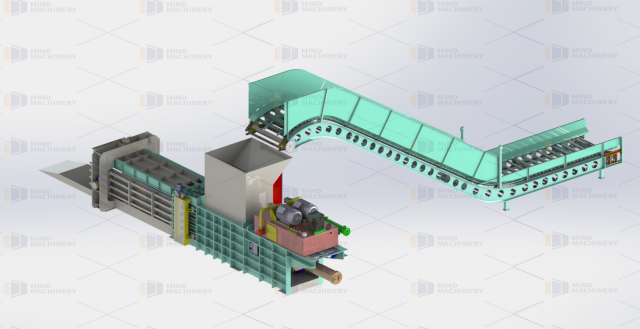
A baler machine is a compacting device that uses a ram to compress materials into
rectangular bales for shipping, storage, further processing, or recycling. Designed to
handle both similar and dissimilar waste, balers transform materials into manageable
configurations, maximizing space and optimizing asset use.
Agricultural products and waste are baled to maintain their value and facilitate either
proper removal or use as raw material.
Baling plays a crucial role in managing the moisture content of animal fodder.
Insufficient moisture can cause hay to become dry and lose its nutritional value,
while excessive moisture can lead to spoilage and potential combustion.
To address these issues, baled fodder is often wrapped in plastic sheets or covers
to maintain optimal moisture levels.
In industrial settings, balers enhance the handling of materials, particularly in recycling facilities.
By compacting materials into smaller, denser, and more stackable bales, balers improve the efficiency
of transportation and significantly reduce hauling costs. Additionally, recycling baled products boosts
throughput rates due to easier material handling, resulting in lower operating expenses and greater economic benefits.
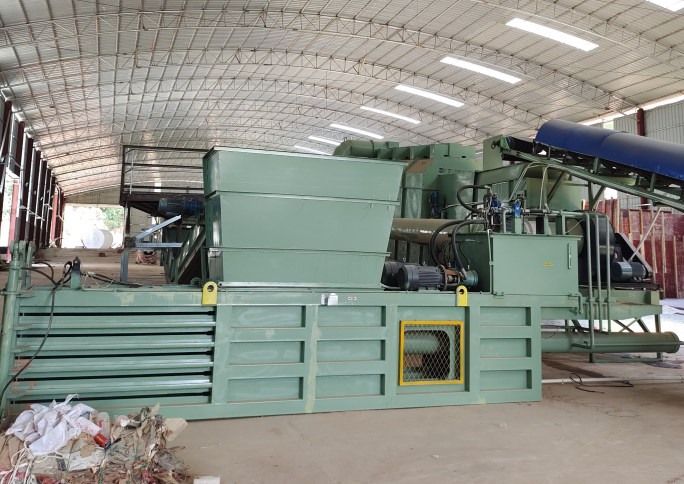
different types of balers
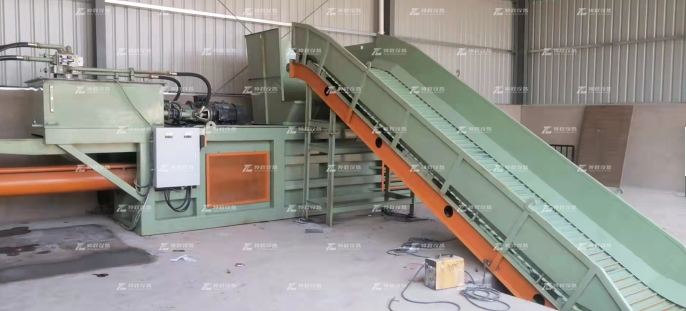
Horizontal balers use horizontal force to compress the materials. Unlike vertical balers, the materials
are not loaded directly into the chamber but are collected by a hopper on top of the machine, where
the material sits on top of the ram. Conveyor, sorting, and shredding systems can be integrated to aid
in loading, making them more convenient and less labor-intensive for operators.
For the process to be efficient, the loaded materials must be prevented from jamming, clogging,
or preventing the movement of the ram.
Horizontal balers are generally larger than vertical balers, allowing them to handle high volumes of material.
They generate greater compaction forces, producing dense bales that can weigh up to half a ton.
This results in uniform bales that are more suitable for transport and further processing.
To address issues with jamming and maintain smooth production, baler manufacturers continually develop
solutions for horizontal balers. One effective method is the use of anti-jamming devices, such as shear blades,
which cut material efficiently and help keep the baling process moving. Shear blades trim excess material that
can obstruct the ram, preventing jams and ensuring a consistent compression stroke.
Unlike horizontal balers, vertical balers cannot utilize shear blades due to their design. As a result, materials for
vertical balers must be pre-cut before being loaded into the machine. Horizontal balers benefit from shear
blades—whether saw-toothed or staged—which improve processing efficiency and minimize delays.
Vertical Balers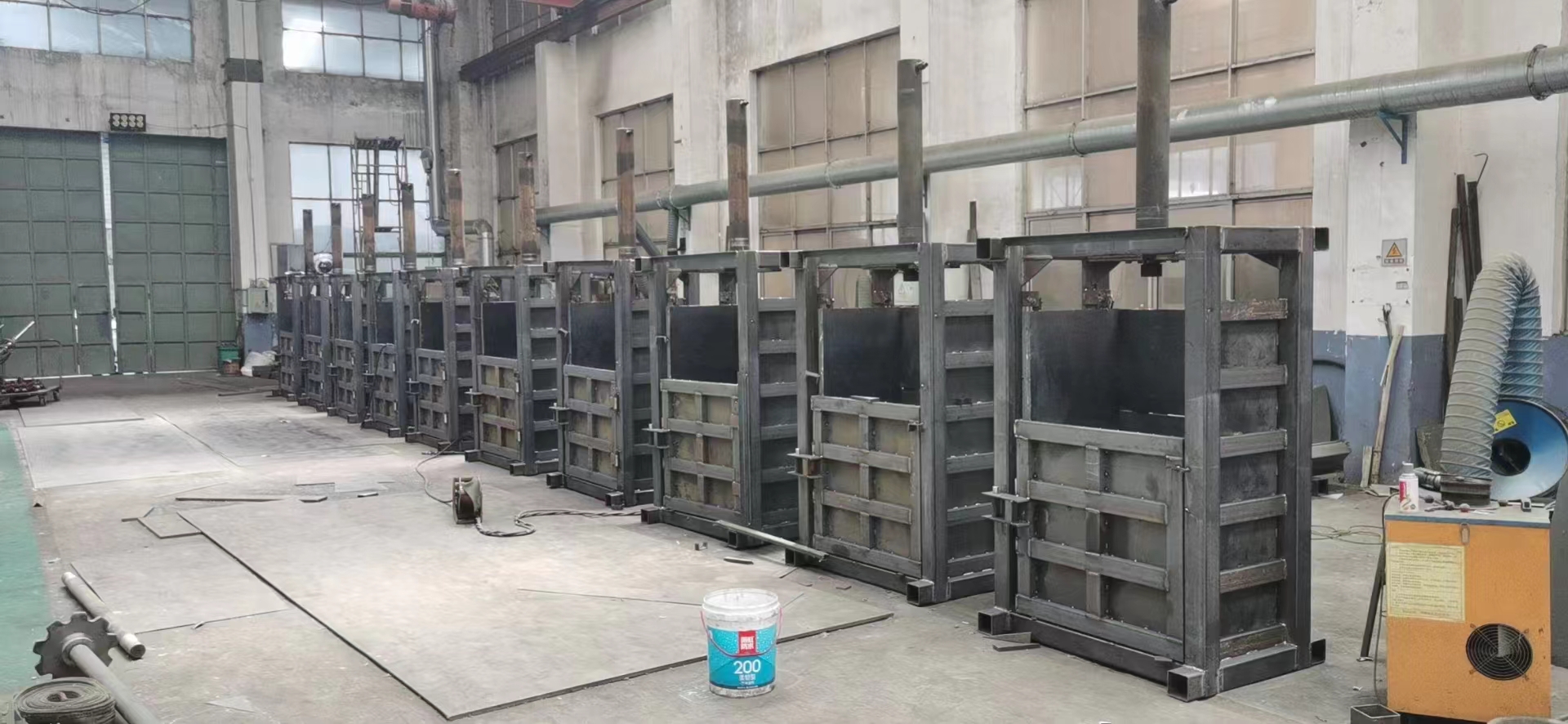
Vertical balers, also known as downstroke balers, compress materials using a vertical, downward force.
These machines are typically employed for recycling materials such as cardboard, plastics, metals, and foam.
The compression chamber is positioned on the side of the machine, elevated for efficiency.
The ram, powered by either hydraulics or an electric motor, moves downward to compress the materials
once the chamber is filled.
Vertical balers are more space-efficient than horizontal balers, making them ideal for smaller-scale applications such
as supermarkets and retail stores. Their compact design not only reduces their footprint but also makes them more
cost-effective, often priced significantly lower than horizontal balers. Vertical balers can handle a wide range of recyclable
materials, offering versatility in what they process. However, they have limitations in output consistency,
as their compaction force and bale sizes are less standardized. This inconsistency can make transportation less
efficient and add extra processing steps for recycling mills, potentially complicating the sale of bales.
Some manufacturers address these issues with heavy-duty vertical balers equipped with powerful pistons and
high-power reciprocating pumps, designed to produce dense, standard-sized bales.
Parameter Sheet :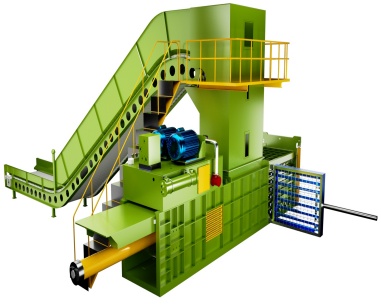
| ZC130 | ZC160 | ZC180 | ZC200 | ZC250 | |
| Feeding hopper size | 2050x1150mm | 2050x1150mm | 2050x1150mm | 2050x1150mm | 2050x1150mm |
| Working pressure | 25 Mpa | 25 Mpa | 25 Mpa | 25 Mpa | 25 Mpa |
| Wire quantity | 7 | 7 | 7 | 7 | 7 |
| Bale weight | 1000-1100kg | 1200-1300kg | 1300-1600kg | 1600-1800kg | 1600-1800kg |
| Bale size 1 | 700x1150x1250mm | 1700x1150x1250mm | 1700x1150x1250mm | 1700x1150x1250mm | 1700x1150x1250mm |
| Capacity | 5000-6000kg/h | 6000-7000kg/h | 7000-8500kg/h | 8000-9000kg/h | 8000-9000kg/h |
| Oil tank | 1200L | 1400L | 1500L | 1500L | 1500L |
| Working power | 37KW | 45KW | 52KW | 52KW | 60KW |
| Feeding Conveyor | Feeding Conveyor | Feeding Conveyor | Feeding Conveyor | Feeding Conveyor | Feeding Conveyor |
What are the common applications of balers?
Steel Recycling
Balers are used for compacting steel cans, aluminum cans, steel sheets, radiator caps, copper wires, and clips.
For lighter metals such as cans and sheets, a two ram baler is enough. But for compacting heavier, thicker metals,
ferrous balers consisting of three hydraulic cylinders are more suitable.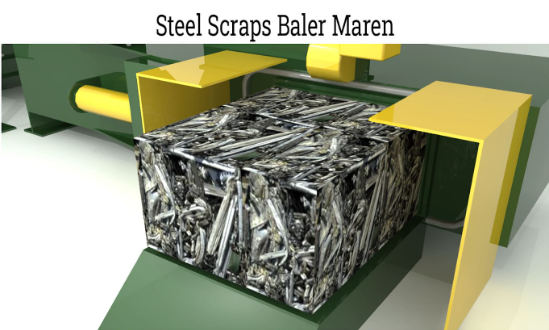
Corrugated Cardboard and Paper Recycling
Balers are used for materials such as cardboard, office papers, magazines, newspapers,
and so forth. An average office worker produces about 2 pounds of paper products per day.
Mixed paper makes up an estimated 70% of office total waste. Large recycling plants use horizontal
single ram balers with automatic tying mechanisms. For small to medium-scale storage and recycling,
standard mill-size balers and stand-alone vertical baling machines are sufficient.
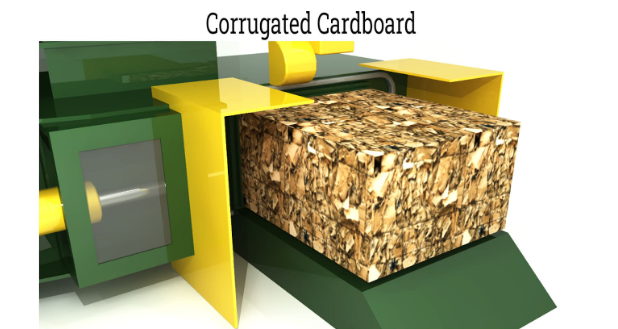
Plastic Recycling
This includes PET and HDPE bottles, plastic films, rigid PP containers, rigid and flexible PVC materials,
as well as electronic and automotive plastic scraps. Prior to feeding these materials to a recycling facility,
sorting should be conducted based on type, origin, and characteristics. When baling multiple types of plastics,
it's crucial to prevent cross-contamination between batches to meet the standards of the recycling facility.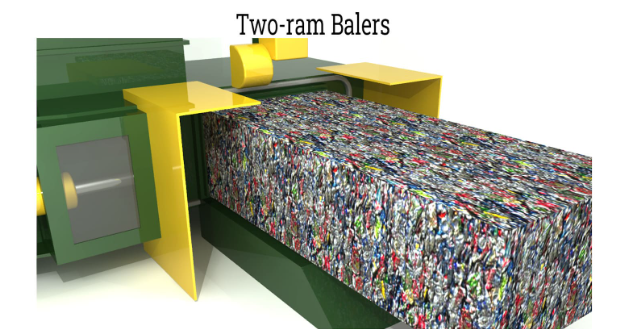
Foam Recycling
Foams are lightweight materials with low densities that occupy significant storage space.
Certain foams, like many polyurethane foams, are thermosetting plastics, meaning their properties change irreversibly upon curing.
This characteristic makes recycling such foams challenging, often leaving incineration or landfill disposal as the primary disposal methods.
Balers assist in reducing the space taken up by compressing weights exceeding a thousand pounds into a volume of approximately 45 cubic feet.
Textile Recycling
This category encompasses used clothing, carpets, rugs, wool, and other fibrous materials.
Baling textiles differs from baling materials like steel and plastic because it requires less force but demands
cleanliness and freedom from stains throughout the process. The primary goal of baling textiles is to minimize
space during hauling and enhance transportation efficiency. Vertical balers are commonly used for handling textiles.
Agricultural Baling
Balers are employed to compress animal fodder, aiding in moisture control and nutrient retention, as previously discussed.
Initially developed for bundling and storing haystacks, the concept was later adapted for handling scrap materials.
Round balers are widely used for baling animal forage.
Balers play a crucial role in compacting animal fodder to regulate moisture levels and preserve nutrients,
as discussed previously. Originating as a solution for bundling and storing haystacks, this concept was
later adapted for handling scrap materials. Round balers are widely used for baling animal forage.
-
 Trommel screenTrommel screen, also known as drum screens, are widely used in various industries for sorting and separating materials.Get Quote
Trommel screenTrommel screen, also known as drum screens, are widely used in various industries for sorting and separating materials.Get Quote -
 Crop straw double shaft shreddApplications:Biomass Energy Production: Shredded straw can be used as a feedstock for bioenergy plants to produce electricity or heat.Livestock Feed: Reduced-si...Get Quote
Crop straw double shaft shreddApplications:Biomass Energy Production: Shredded straw can be used as a feedstock for bioenergy plants to produce electricity or heat.Livestock Feed: Reduced-si...Get Quote -
 Zhongcheng Air Drum SeparatorAir drum separators effectively separate lightweight materials (e.g., plastics, paper) from heavier materials (e.g., metals, glass). This high efficiency is cru...Get Quote
Zhongcheng Air Drum SeparatorAir drum separators effectively separate lightweight materials (e.g., plastics, paper) from heavier materials (e.g., metals, glass). This high efficiency is cru...Get Quote
-
2023-01-11Trommel screenTrommel screen, also known as drum screens, are widely used in various industries for sorting and separating materials.
-
2024-06-20Wind Separator Technology for Lightweight Materials in Urban Solid Wastewind separator, also known as air separation, is a sophisticated and efficient method of sorting that utilizes air as the separating medium.
-
2024-08-07Tire double shaft shredderOperation:Feeding: Whole or pre-cut tires are fed into the shredder through an inlet hopper.Shredding: As the tires enter the shredding chamber, the rotating cu...
-
2024-08-16Crop straw double shaft shredderApplications:Biomass Energy Production: Shredded straw can be used as a feedstock for bioenergy plants to produce electricity or heat.Livestock Feed: Reduced-si...
-
2024-06-08Solutions for Jaw Crusher ProblemsJaw crusher is widely used in mining, smelting, building materials, highways, railways, water conservancy and chemical industries. The maximum compressive stren...



